Autogenous Self-Healing Capacity of Early-Age Ultra-High-Performance Fiber-Reinforced Concrete
Abstract
1. Introduction
2. Materials and Methods
2.1. Aim of the Research
2.2. Materials and Mix Design Proportions
2.3. Experimental Program
- Humidity chamber (C): at a constant temperature of 20 °C and 100% relative humidity (RH);
- Immersion in tap water (TW): Immersion in tap water at 25 °C;
- Immersion in seawater (SW): Immersion in an artificial seawater at 25 °C. The artificial seawater was prepared in accordance with the composition indicated in ASTM D1141-98 (2013), as shown in Table 2;
- Heat curing (HC): Specimens were immersed in tap water at 90 °C for 2 days followed by 28 days in a humidity chamber (20 °C, 100% RH).
2.4. Test Methods
2.4.1. Concrete Properties on Fresh and Hardened State
2.4.2. Precracking Methodology
2.4.3. Crack Width Analysis
2.4.4. SEM and EDS Analysis
3. Experimental Results
3.1. Fresh and Hardened-State Properties
3.2. Crack Sealing Analysis
3.3. Crack Healing (Mechanical Recovery)
3.4. Microstructural Analysis of the Healing Products
4. Conclusions
- The temperature and the continuous immersion in water were essential variables to promote autogenous healing and their combination increased the crack sealing ability. The highest self-sealing rates were observed for the heat curing condition followed in decreasing order by tap water immersion, seawater immersion and humidity chamber exposure. As a matter of fact, for a crack width of 0.2 mm (200 µm) the following average values of crack closure were reached: 88% for the heat curing condition, 65% for the tap water immersion, 45% for the seawater immersion and 20% for the specimens cured in humidity chamber.
- The widest crack totally sealed was 0.2386 mm for tap water immersion, 0.2109 mm for heat-cured specimens, 0.2025 mm for seawater immersion and 0.027 mm for humidity chamber. The latter was the most unfavorable exposure condition to promote self-sealing/healing.
- Healed specimens (previously precracked by means of flexural tests up to 10–20 µm) reached similar mechanical responses than identical uncracked specimens. The high residual resistance after healing in microcracked specimens was mainly attributed to the maturation of the fiber/matrix bond and not to the self-healing. However, healed specimens (previously precracked by splitting tests up to 0.4 mm) did not reach the mechanical response obtained by identical undamaged specimens because they were only partially healed. This fact was explained through SEM and EDS analyses which showed that healing products were mostly present on the surface of the specimens, whereas they were barely detected inside the cracks.
- In the present research, autogenous healing was not efficient enough to heal completely the macrocracks. On the other hand, microcracks in UHPFRC were clearly sealed and the residual mechanical capacity of the healed specimens was comparable to the uncracked ones.
Author Contributions
Funding
Institutional Review Board Statement
Informed Consent Statement
Data Availability Statement
Conflicts of Interest
References
- Dossche, C.; Boel, V.; De Corte, W.; Van den Heede, P.; De Belie, N. A plant based LCA of high-strength prestressed concrete elements and the assessment of a practical ecological variant. Cem. Concr. Compos. 2016, 73, 192–202. [Google Scholar] [CrossRef]
- Koch, G.; Varney, J.; Thompson, N.; Moghissi, O.; Gould, M.; Payer, J. International Measures of Prevention, Application and Economics of Corrosion Technologies Study; NACE International: Houston, TX, USA, 2016. [Google Scholar]
- Van Tuan, N.; Ye, G. Hydration and microstructure of ultra high performance concrete incorporating rice husk ash. Cem. Concr. Res. 2011, 41, 1104–1111. [Google Scholar] [CrossRef]
- Wang, W.; Liu, J.; Agostini, F.; Davy, C.; Skoczylas, F.; Corvez, D. Durability of an Ultra High Performance Fiber Reinforced Concrete (UHPFRC) under progressive aging. Cem. Concr. Res. 2014, 55, 1–13. [Google Scholar] [CrossRef]
- Shi, C.; Wu, Z.; Xiao, J.; Wang, D.; Huang, Z.; Fang, Z. A review on ultra high performance concrete: Part I. Raw materials and mixture design. Constr. Build. Mater. 2015, 101, 741–751. [Google Scholar] [CrossRef]
- Cuenca, E.; Ferrara, L. Fracture toughness parameters to assess crack healing capacity of fiber reinforced concrete under repeated cracking-healing cycles. Theor. Appl. Fract. Mec. 2020, 106, 102468. [Google Scholar] [CrossRef]
- Cuenca, E.; Mezzena, A.; Ferrara, L. Synergy between crystalline admixtures and nano-constituents in enhancing autogenous healing capacity of cementitious composites under cracking and healing cycles in aggressive waters. Constr. Build. Mater. 2021, 266, 121447. [Google Scholar] [CrossRef]
- Liu, J.; Farzadnia, N.; Shi, C.; Ma, X. Effects of superabsorbent polymer on shrinkage properties of ultra-high strength concrete under drying condition. Constr. Build. Mater. 2019, 215, 799–811. [Google Scholar] [CrossRef]
- Yang, L.; Shi, C.; Wu, Z. Mitigation techniques for autogenous shrinkage of ultra-high-performance concrete—A review. Compos. Part B-Eng. 2019, 178, 107456. [Google Scholar] [CrossRef]
- Yang, Y.; Yang, E.-H.; Li, V.C. Autogenous healing of engineering cementitious composites at early age. Cem. Concr. Res. 2011, 41, 176–183. [Google Scholar] [CrossRef]
- Wiegrink, K.; Marikunte, S.; Shah, S.P. Shrinkage cracking of high-strength concrete. ACI Mater. J. 1996, 93, 409–415. [Google Scholar]
- Shah, S.P.; Wang, K.; Weiss, W.J. Is high strength concrete durable? In Concrete Technology for a Sustainable Development in the 21st Century; CRC Press: Boca Raton, FL, USA, 2000; pp. 102–114. [Google Scholar]
- Mihashi, H.; De Leite, J.P.B. State-of-the-art report on control of cracking in early age concrete. J. Adv. Concr. Technol. 2004, 2, 141–154. [Google Scholar] [CrossRef]
- López, J.A.; Serna, P.; Navarro-Gregori, J.; Coll, H. A simplified five-point inverse analysis method to determine the tensile properties of UHPFRC from unnotched four-point bending tests. Compos. Part B-Eng. 2016, 91, 189–204. [Google Scholar] [CrossRef]
- Cuenca, E.; Rigamonti, S.; Gastaldo, E.; Ferrara, L. Crystalline Admixture as Healing Promoter in Concrete Exposed to Chloride-Rich Environments: Experimental Study. J. Mater. Civ. Eng. 2021, 33, 04020491. [Google Scholar] [CrossRef]
- Rooij, M.; van Tittelboom, K.; Belie, N.; Schlangen, E. Self-Healing Phenomena in Cement-Based Materials: State-of-the-Art Report of RILEM Technical Committee; Springer: Dordrecht, The Netherlands, 2013; ISBN 9400766246. [Google Scholar]
- Maes, M.; De Belie, N. Service life estimation of cracked and healed concrete in marine environment. In Proceedings of the International Conference on Concrete Repair, Thessaloniki, Greece, 20–23 June 2016. [Google Scholar]
- Darquennes, A.; Olivier, K.; Benboudjema, F.; Gagné, R. Self-healing at early-age, a way to improve the chloride resistance of blast-furnace slag cementitious materials. Constr. Build. Mater. 2016, 113, 1017–1028. [Google Scholar] [CrossRef]
- Shim, Y.; Hong, G.; Choi, S. Autogenous Healing of Early-Age Cementitious Materials Incorporating Superabsorbent Polymers Exposed to Wet/Dry Cycles. Materials 2018, 11, 2476. [Google Scholar] [CrossRef] [PubMed]
- Roig-Flores, M.; Pirritano, F.; Serna, P.; Ferrara, L. Effect of crystalline admixtures on the self-healing capability of early-age concrete studied by means of permeability and crack closing tests. Constr. Build. Mater. 2016, 114, 447–457. [Google Scholar] [CrossRef]
- Hong, G.; Song, C.; Choi, S. Autogenous Healing of Early-Age Cracks in Cementitious Materials by Superabsorbent Polymers. Materials 2020, 13, 690. [Google Scholar] [CrossRef]
- Roig-Flores, M.; Serna, P. Concrete Early-Age Crack Closing by Autogenous Healing. Sustainability 2020, 12, 4476. [Google Scholar] [CrossRef]
- Wang, K.; Jansen, D.C.; Shah, S.P.; Karr, A.F. Permeability study of cracked concrete. Cem. Concr. Res. 1997, 27, 381–393. [Google Scholar] [CrossRef]
- Yoo, D.Y.; Shin, W.; Chun, B.; Banthia, N. Assessment of steel fiber corrosion in self-healed ultra-high-performance fiber-reinforced concrete and its effect on tensile performance. Cem. Concr. Res. 2020, 133, 106091. [Google Scholar] [CrossRef]
- Kim, S.; Yoo, D.Y.; Kim, M.J.; Banthia, N. Self-healing capability of ultra-high-performance fiber-reinforced concrete after exposure to cryogenic temperature. Cem. Concr. Compos. 2019, 104, 103335. [Google Scholar] [CrossRef]
- Di Prisco, M.; Ferrara, L.; Lamperti, M. Double edge wedge splitting (DEWS): An indirect tension test to identify post-cracking behaviour of fibre reinforced cementitious composites. Mater. Struct. 2013, 46, 1893–1918. [Google Scholar] [CrossRef]
- Baby, F.; Graybeal, B.; Marchand, P.; Toutlemonde, F. UHPFRC tensile behaviour characterization: Inverse analysis of four-point bending test results. Mater. Struct. 2013, 46, 1337–1354. [Google Scholar] [CrossRef]
- Park, S.H.; Kim, D.J.; Ryu, G.S.; Koh, K.T. Tensile behavior of ultra high performance hybrid fiber reinforced concrete. Cem. Concr. Compos. 2012, 34, 172–184. [Google Scholar] [CrossRef]
- Wille, K.; El-Tawil, S.; Naaman, A.E. Properties of strain hardening ultra high performance fiber reinforced concrete (UHP-FRC) under direct tensile loading. Cem. Concr. Compos. 2014, 48, 53–66. [Google Scholar] [CrossRef]
- Baby, F.; Graybeal, B.; Marchand, P.; Toutlemonde, F. Proposed flexural test method and associated inverse analysis for ultra high performance fiber reinforced concrete. ACI Mater. J. 2012, 109, 545–556. [Google Scholar]
- Hillerborg, A.; Modéer, M.; Petersson, P.E. Analysis of crack formation and crack growth in concrete by means of fracture mechanics and finite elements. Cem. Concr. Res. 1976, 6, 773–782. [Google Scholar] [CrossRef]
- Conforti, A.; Zerbino, R.; Plizzari, G.A. Influence of steel, glass and polymer fibers on the cracking behavior of reinforced concrete beams under flexure. Struct. Concr. 2019, 20, 133–143. [Google Scholar] [CrossRef]
- Conforti, A.; Zerbino, R.; Plizzari, G.A. Assessing the influence of fibers on the flexural behavior of reinforced concrete beams with different longitudinal reinforcement ratios. Struct. Concr. 2020. [Google Scholar] [CrossRef]
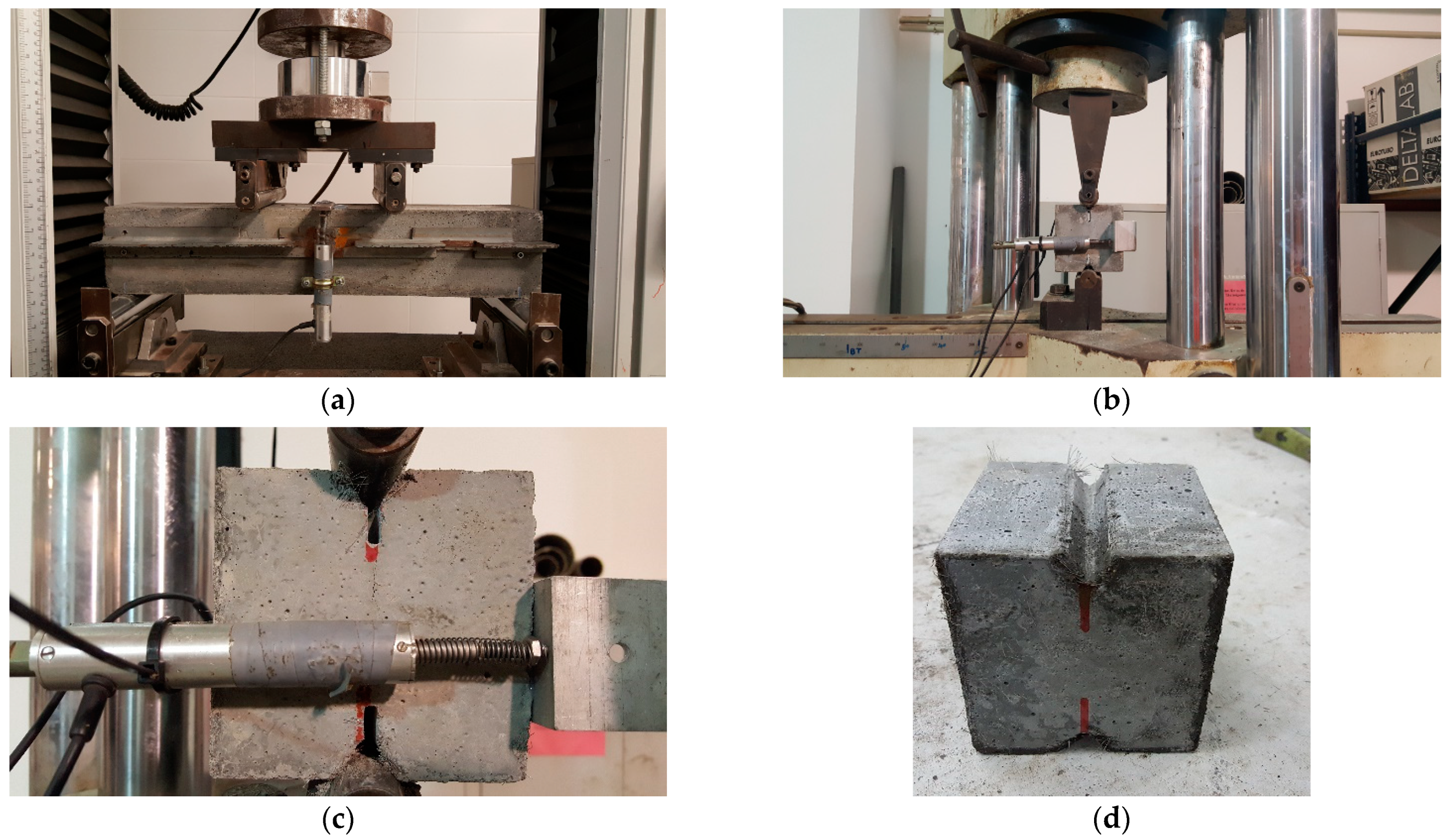

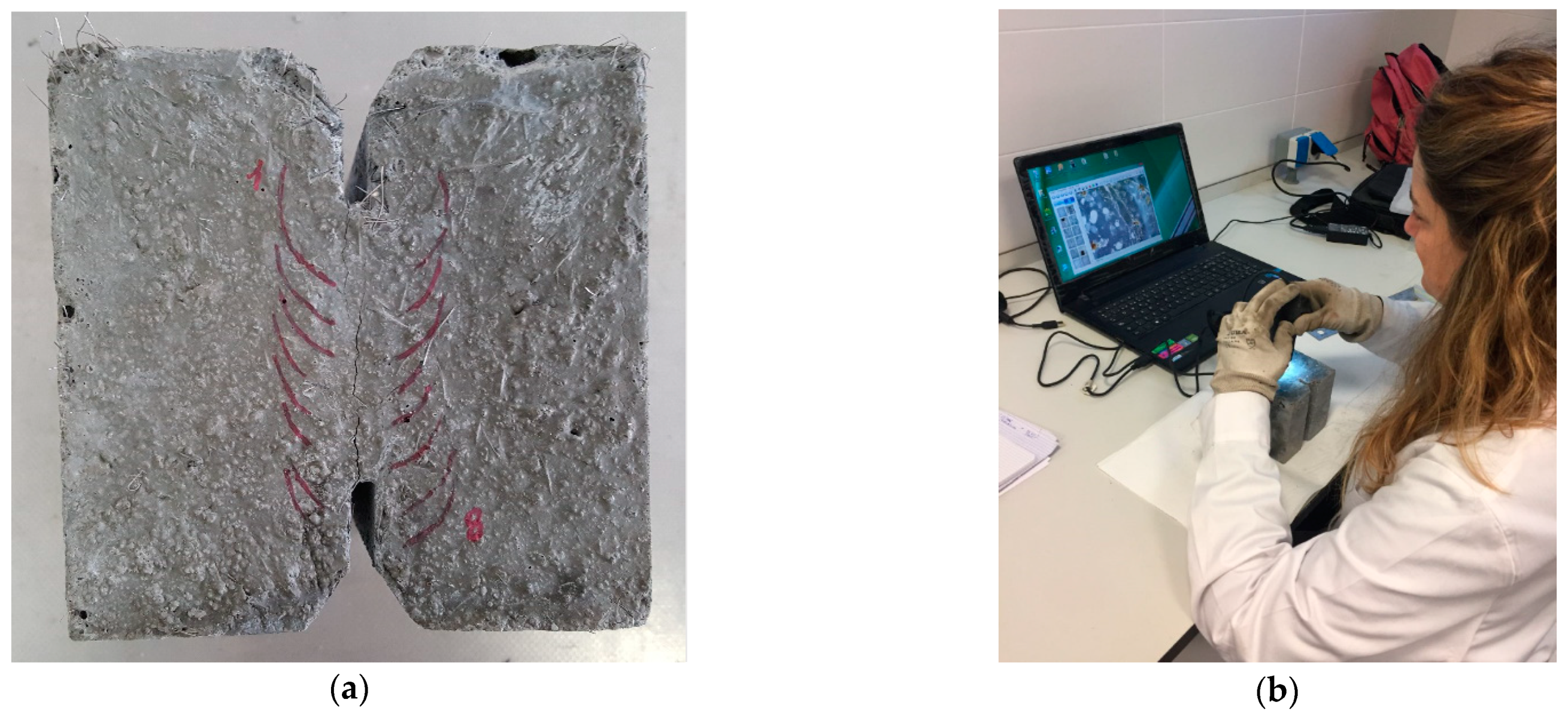


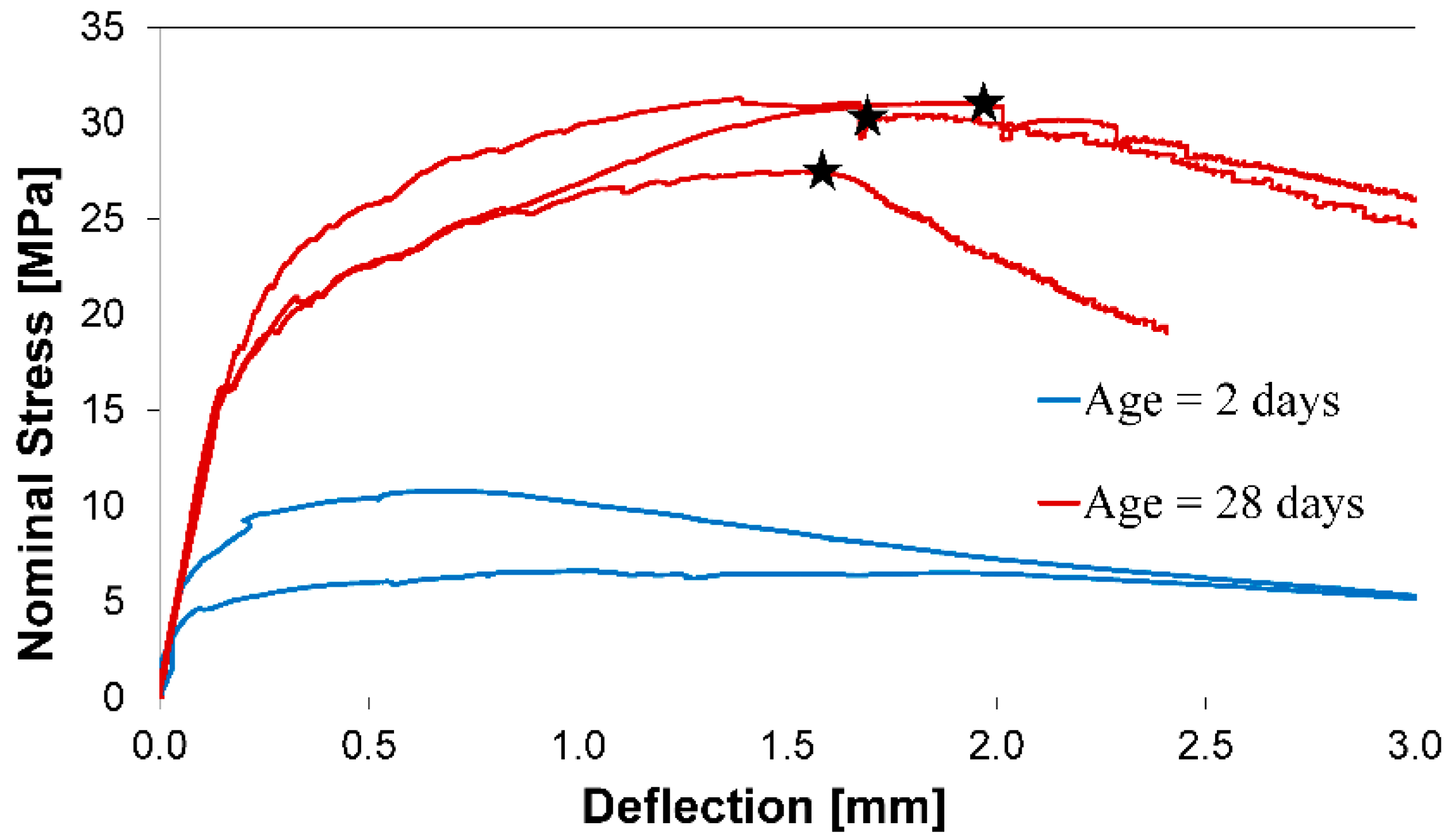

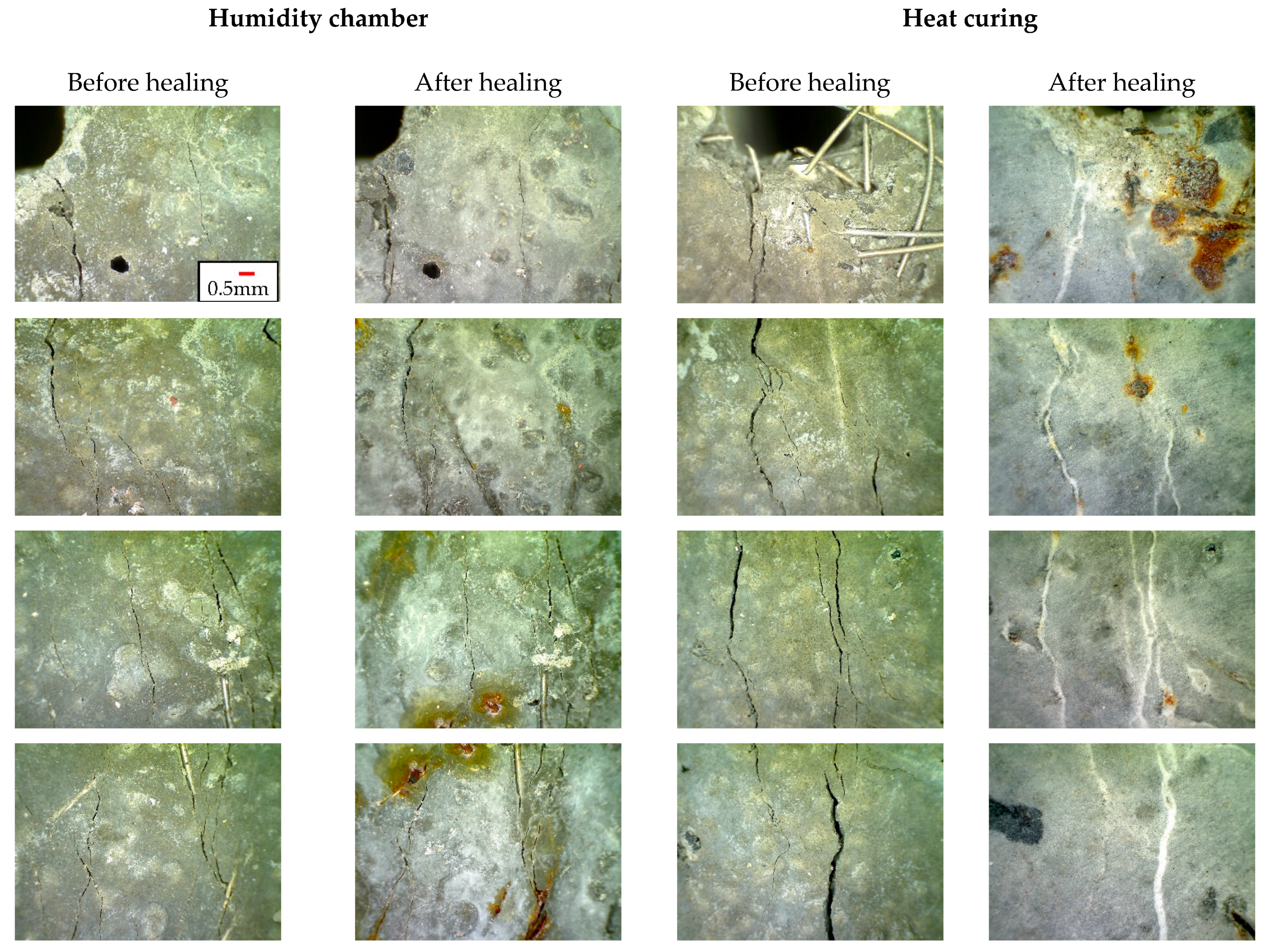


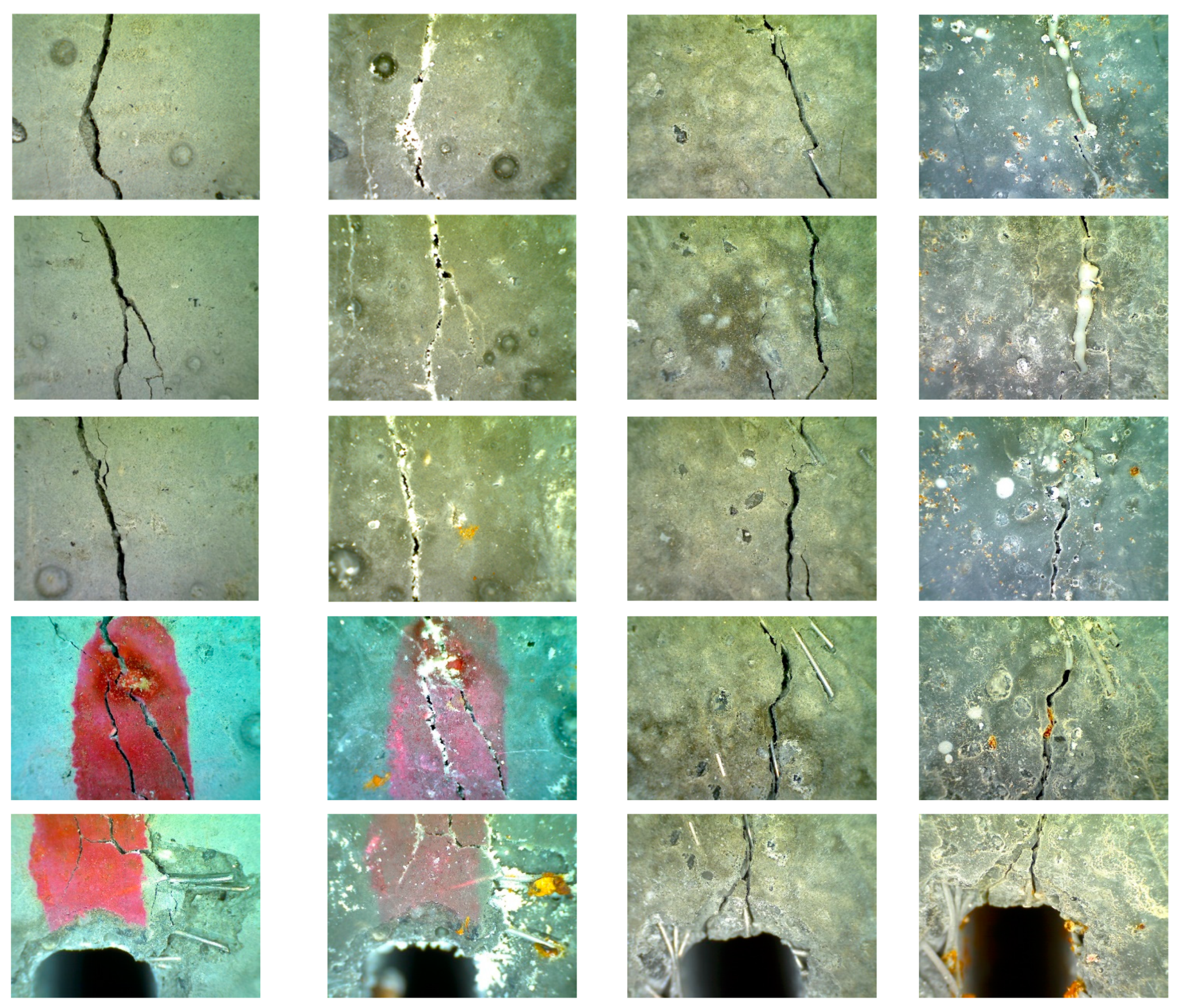




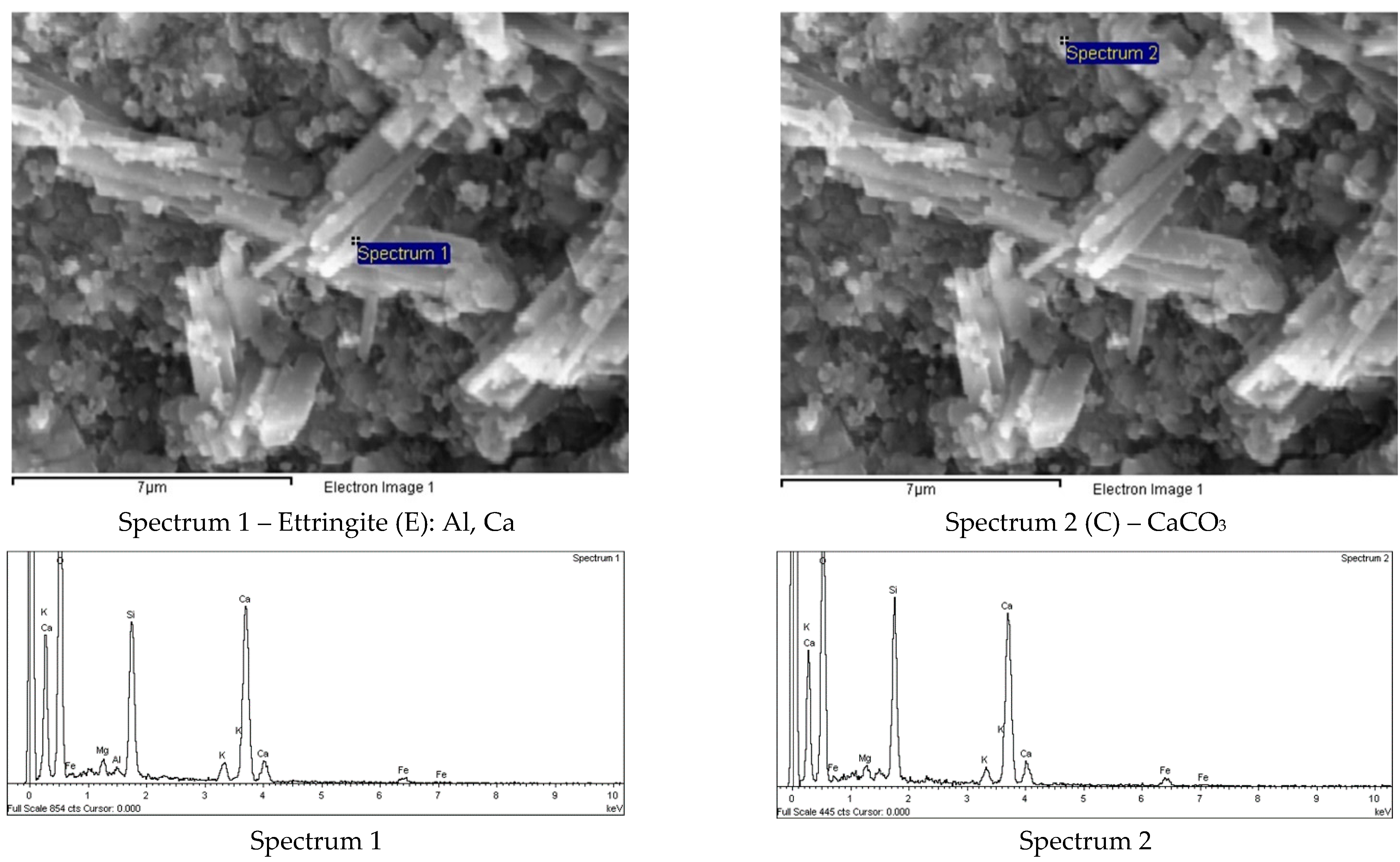
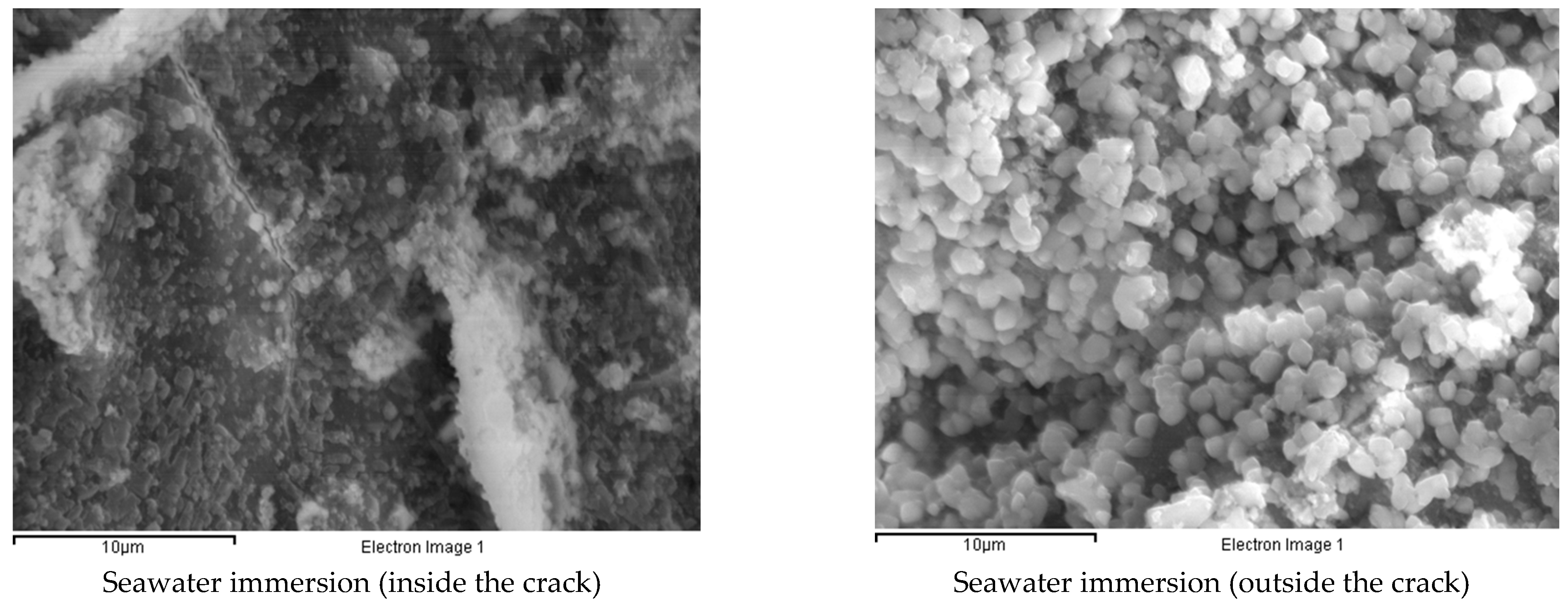


| Constituent | kg/m3 |
|---|---|
| Cement CEM I 42.5 R-SR5 Lafarge® | 800 |
| Microsilica fume 940 D Elkem® Undensified | 175 |
| Siliceous fine powder (Quarzfin from Sibelco®) U-S 500 | 225 |
| Fine sand (0.5 mm) | 302 |
| Medium sand (0.6–1.2 mm) | 565 |
| Water | 160 |
| Superplasticizer Sika 20HE | 30 |
| Micro-steel fibers OL 13/0.22 | 175 |
| Chemical Component | Concentration (g/L) |
|---|---|
| NaCl | 24.72 |
| KCl | 0.67 |
| CaCl2·2H2O | 1.36 |
| MgCl2·6H2O | 4.66 |
| MgSO4·7H2O | 6.29 |
| NaHCO3 | 0.18 |
| Exposure Condition | Prismatic Specimen 100 × 100 × 500 mm3 (4-Point Bending Test: Microcrack Level) | Notched Cube 100 × 100 × 100 mm3 (Splitting Test: Macrocrack Level) | ||
|---|---|---|---|---|
| Without precrack | Microcrack (10–20 µm) | Without precrack | Macrocrack (up to 0.4 mm) | |
| Humidity chamber (C) | 2 | 3 | 3 | 3 |
| Tap water immersion (TW) | - | - | 3 | 3 |
| Seawater immersion (SW) | 2 | 3 | 3 | 3 |
| Crack reparation with epoxy resin | - | - | - | 3 |
| Heat curing (HC) | 2 | 2 | 3 | 3 |
| Stress at First Cracking (σcr) | Peak Stress (σpeak) | |||
|---|---|---|---|---|
| Concrete Age (days) | 2 | 28 | 2 | 28 |
| Average (MPa) | 5.23 | 15.83 | 8.72 | 29.93 |
| Coefficient of variation, CoV (%) | 16.78 | 2.66 | 33.80 | 7.12 |
Publisher’s Note: MDPI stays neutral with regard to jurisdictional claims in published maps and institutional affiliations. |
© 2021 by the authors. Licensee MDPI, Basel, Switzerland. This article is an open access article distributed under the terms and conditions of the Creative Commons Attribution (CC BY) license (http://creativecommons.org/licenses/by/4.0/).
Share and Cite
Cuenca, E.; Serna, P. Autogenous Self-Healing Capacity of Early-Age Ultra-High-Performance Fiber-Reinforced Concrete. Sustainability 2021, 13, 3061. https://doi.org/10.3390/su13063061
Cuenca E, Serna P. Autogenous Self-Healing Capacity of Early-Age Ultra-High-Performance Fiber-Reinforced Concrete. Sustainability. 2021; 13(6):3061. https://doi.org/10.3390/su13063061
Chicago/Turabian StyleCuenca, Estefania, and Pedro Serna. 2021. "Autogenous Self-Healing Capacity of Early-Age Ultra-High-Performance Fiber-Reinforced Concrete" Sustainability 13, no. 6: 3061. https://doi.org/10.3390/su13063061
APA StyleCuenca, E., & Serna, P. (2021). Autogenous Self-Healing Capacity of Early-Age Ultra-High-Performance Fiber-Reinforced Concrete. Sustainability, 13(6), 3061. https://doi.org/10.3390/su13063061







